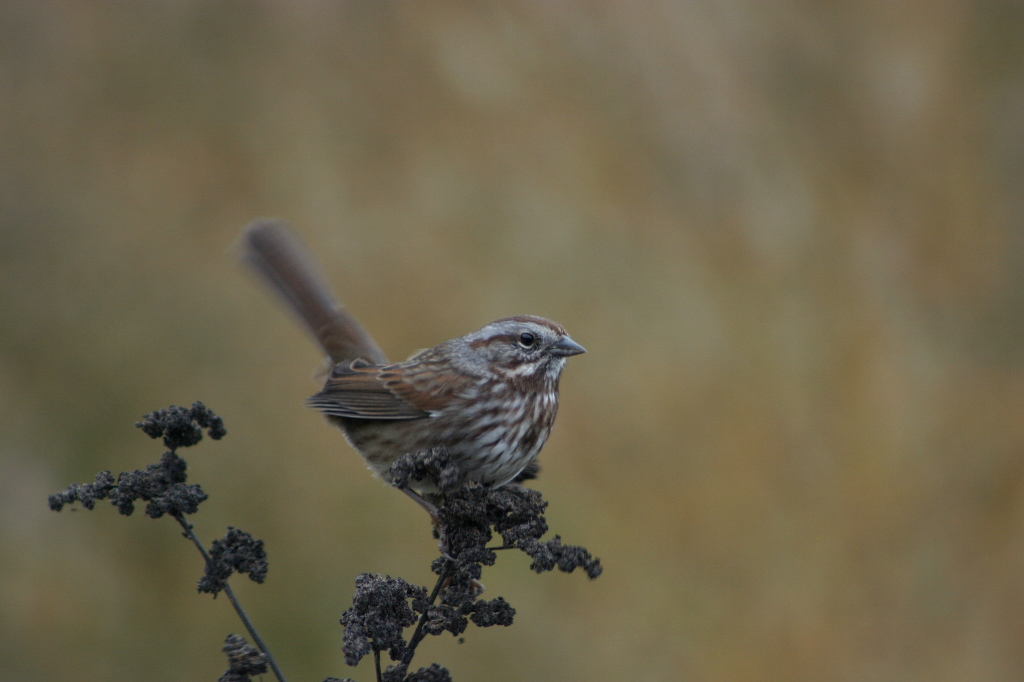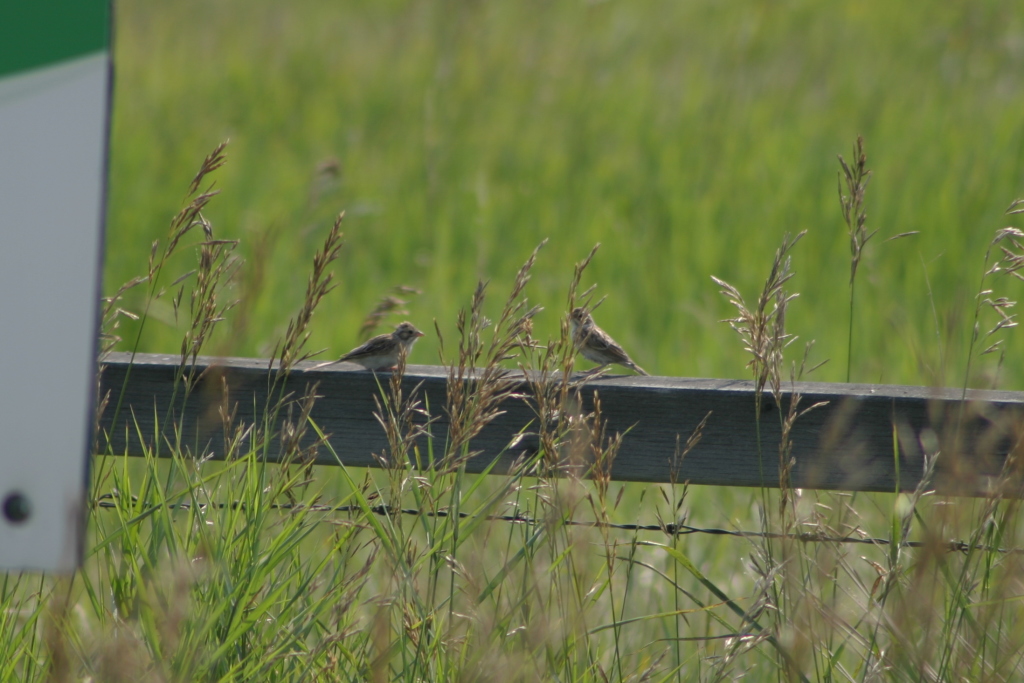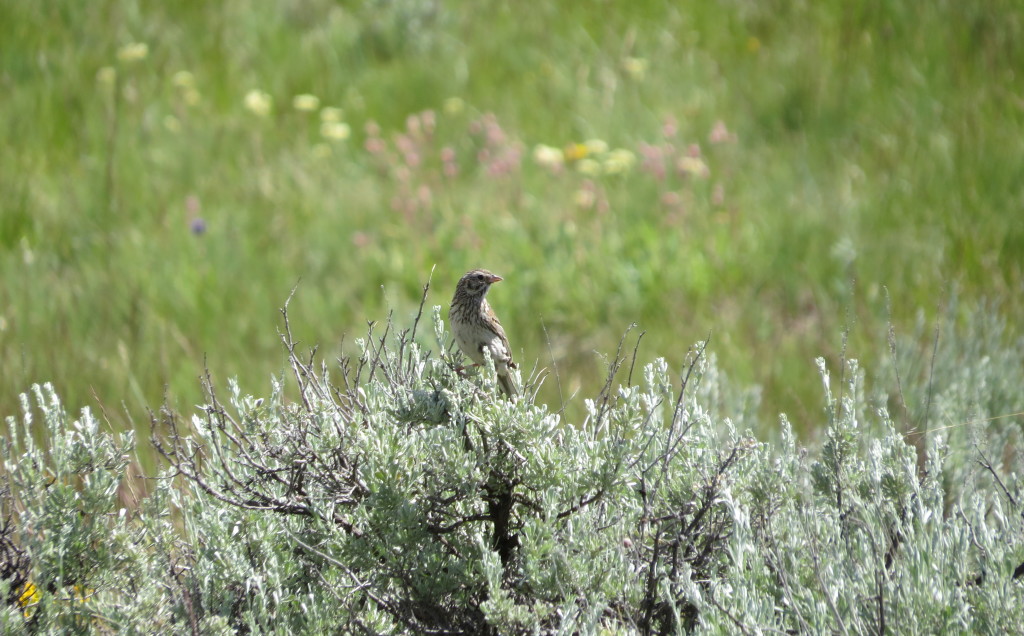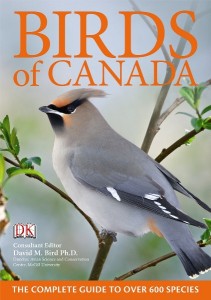Sparrows are one of those families of birds where most of the species are very similar, and not all are easy to ID when in the field. There are about 35 species of sparrow in North America. These birds, commonly known as Little Brown Jobs, or LBJs, can be seen in almost every, if not every habitat across Canada. The most common in my area are Song Sparrow, House Sparrow, Chipping Sparrow, Savannah Sparrow, White-crowned Sparrow and Lincoln’s Sparrow.

Though many other species are around, these are the ones most commonly seen – here. Not everywhere has the same selection. In fact, the sparrow variety varies greatly. Sparrows that are extreme rarities in one place are the most common bird in another. At first glance, most sparrows are small, brown birds that live everywhere and chirp lustily all the time. Right?
Look closer.
Size is generally similar, but a few (such as the Grasshopper Sparrow) stand out by being either bigger or smaller. Breast colour, streaking and spots range across all of the options available, while bill colours and eye rings/colour simply add confusion to the mix. So how do you tell them apart?
Start with the breast patterns. I will mention only a few of the common species across Canada, not including the House Sparrow.
Song Sparrows and Lincoln’s Sparrows have very similar breast streaking (note photo above), and are told apart generally by the Song Sparrow’s deep chocolate breast spot, situated in the very centre of the breast, among the lines, and the Lincoln’s lighter breast streaking. The Lincoln’s has a darker colour of streaks than the Song, which has a heavy dark chocolate brown, as opposed to the Lincoln’s sharp black.

Clay-coloured Sparrows have a flat, for lack of better words, creamy-clay breast. Pretty much only Chipping Sparrows can compare to the streak-less, spotless breast of the Clay-coloured.
Brewer’s Sparrows also have nondescript breasts, but they also have nondescript everything, as opposed to some other characteristics of they Clay-Coloured and Chipping.
Savannah Sparrows are closest to Song and Vesper Sparrows. For a front view, Song Sparrows have extremely heavy, dark streaking with an unusual “blurry” quality. The streaks on a Song’s breast are lumped together and blotchy. Compared to a Savannah, it should be easy to compare and contrast the two, but variation in the field makes it difficult. Watch for the Song’s darker overall colour and its longer tail.
Vesper Sparrows, also have darker streaking, although it is a lot finer than the Song’s. It is, however very similar to the Savannah, and the best differentiating tip-offs are the Savannah’s yellow head stripe and creamy breast where the Vesper has an plainer head colouration head and white breast background.
Stay tuned for more info on your spring sparrows!

